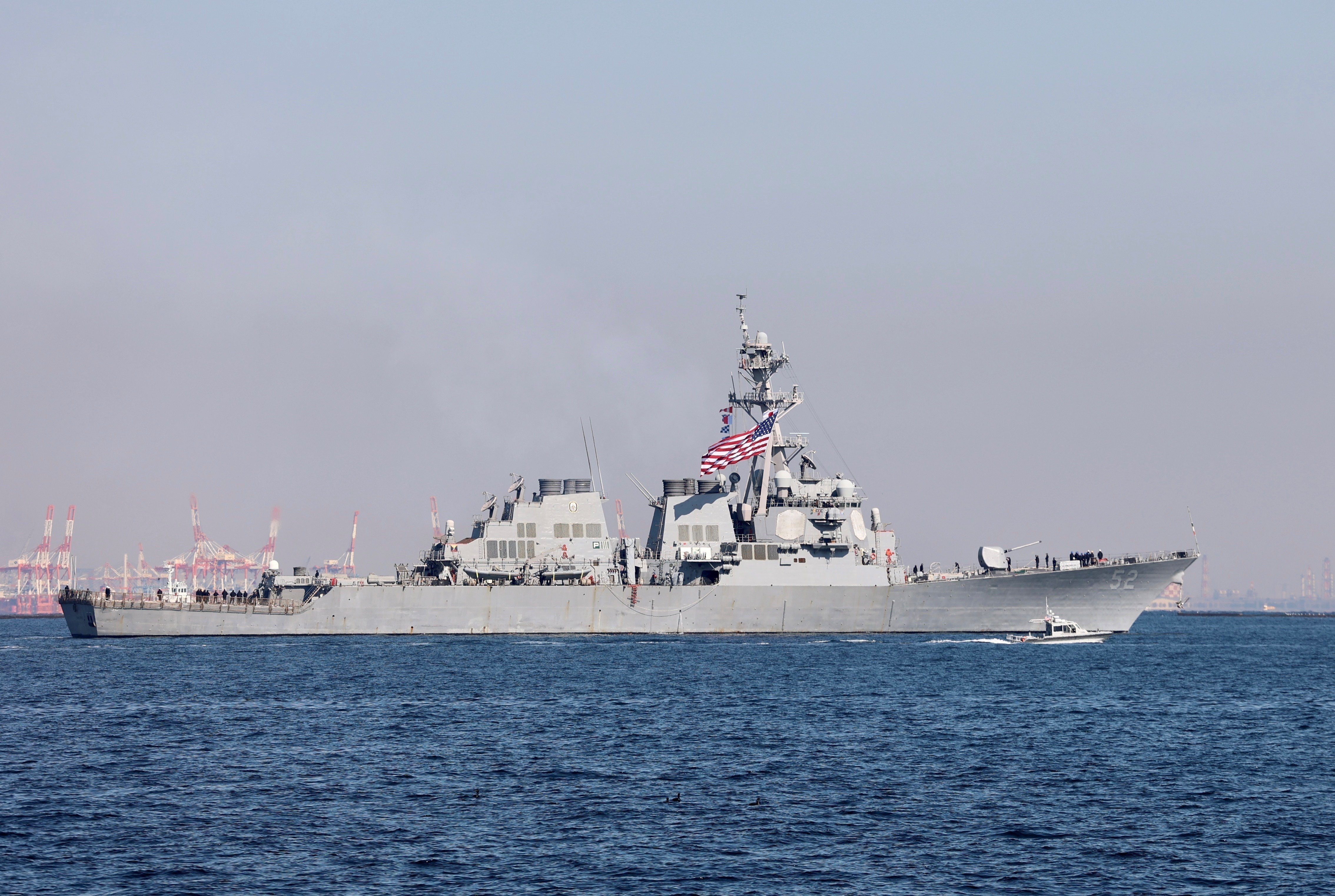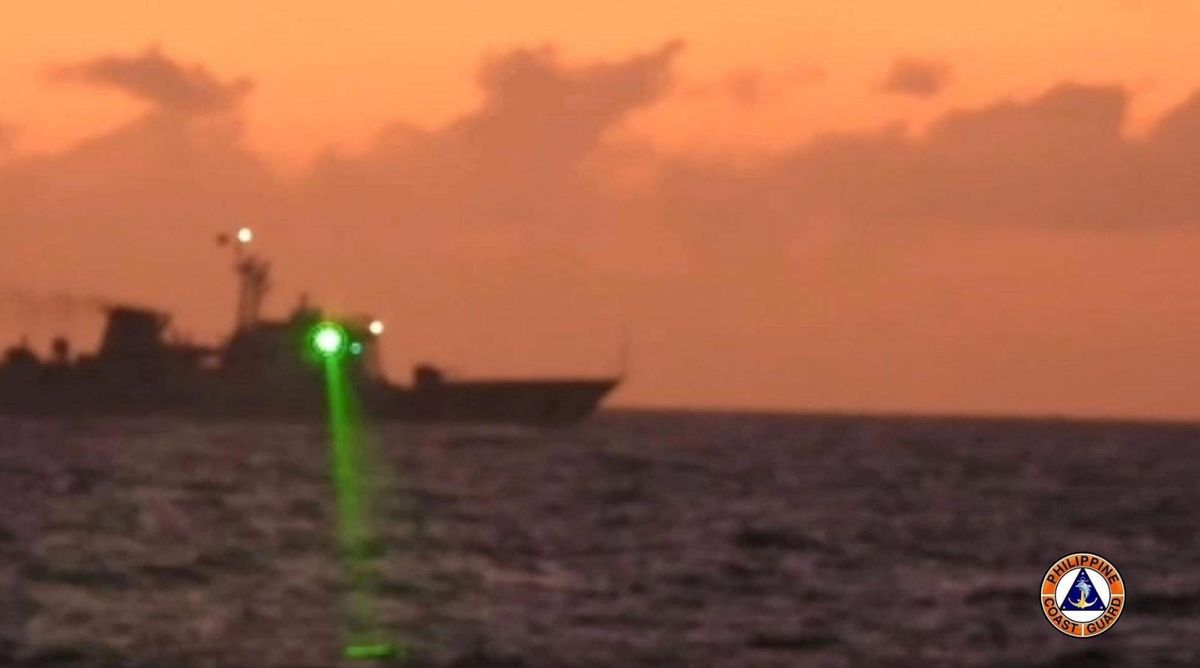
The U.S Marine Corps and the Japan Ground Self-Defense Force (JGSDF) began the bilateral Iron Fist 2023 exercise last week. It’s the first exercise that has been held in Japan since it began in 2006. Previous iterations were held at Marine Corps Base Camp Pendleton, Calif.
This iteration of Iron Fist will include Japan Maritime Self-Defense Force (JMSDF) into the exercise, according to the Marines. The previous exercises only involved Marine Corps, U.S. Navy and JGSDF. The exercise would test joint (combined) operations between the JSDF and the U.S. Forces by integrating airborne operations by the JGSDF 1st Airborne Brigade with bilateral amphibious operations.
The exercise will run until March 12 near the JGSDF Hijyudai Maneuver Area on Kyushu, Tokunoshima Island and Kikaijima Island, both part of the Amani Islands lying between Kyushu and Okinawa. Aviation units will largely stage out of JGSDF Camp Takayubaru on Kyushu. JGSDF forces taking part in the exercise are the Amphibious Rapid Deployment Brigade (ARDB), 1st Airborne Brigade, and 1st Helicopter Brigade, along with the Western Army Aviation Unit. The U.S. Marine Corps’ 31st MEU will participate, while the U.S. Navy and JMSDF will participate with the America Expeditionary Strike Group – which features amphibious assault ship USS America (LHA-6), amphibious transport dock USS Green Bay (LPD-20) and dock landing ship USS Ashland (LSD-48). The Japanese will include LST JS Osumi (LST-4001), respectively.
The five-week exercise also focuses on advanced marksmanship, amphibious reconnaissance, fire and maneuver assaults, logistics and medical support, and fire support operations, such as mortars, artillery and close-air support.
On Friday in Japan, destroyer USS Barry (DDG-52) departed Commander, Fleet Activities Yokosuka, Japan as part of a scheduled homeport shift following six years of service forward-deployed to U.S. 7th Fleet said in a statement.
Barry operated in the Indo-Pacific while assigned to Commander, Task Force (CTF) 71/Destroyer Squadron (DESRON) 15. The destroyer will move to Everett, Wash., — where the ship will undergo routine maintenance, joining U.S. 3rd Fleet. Barry will be part of DESRON 31 after her transit across the International Date Line.

Meantime Japan is to relax restrictions on shooting down unmanned unidentified suspicious objects with Japan Defense Minister Yasukazu Hamada stating in a Friday press conference that this will also cover unmanned aerial vehicles (UAVs).
On Thursday, the ruling Liberal Democratic Party and its junior coalition partner Komeito endorsed the easing of rules regarding the use of weapons, which under Article 84 of the Self-Defense Force Law is only justified in self-defense or in emergency evacuations. Hamada stated that the government’s interpretation of the law in the past was based on manned aircraft in mind and the subsequent loss of life that would result from shooting down such aircraft. However with unmanned balloons violating Japanese airspace and flying at high altitudes, the use of weapons against them would not directly harm anyone, he said. Hamada added that as the threat of intrusion into Japan’s airspace by various means, such as drones and balloons, increased, Japan would like to undertake stricter measures against such to defend the lives and properties of Japanese people and safeguard our it’s sovereignty and in accordance with international laws and customs. The Japanese defense chief stated that his ministry would conduct reviews of the related regulations to allow the military to respond appropriately to situations. He confirmed that the relaxed rules of engagement would also apply to UAVs that violated Japanese airspace.
Earlier on Tuesday, Japan’s Defense Ministry said as a result of further analysis of specific balloon-shaped flying objects that had been sighted in Japan’s airspace in the past – including those in November 2019, June 2020 and September 2021 – the ministry came to the conclusion that the balloons in question are strongly presumed to be unmanned surveillance balloons flown by China. The ministry said it demanded China’s government confirm the facts of the incident and prevent similar situations in the future.
“We will not accept any invasion of our airspace by a foreign unmanned reconnaissance balloon,” reads the statement.
On Wednesday in a regular press conference, China Foreign Ministry Spokesperson Wang Wenbin said China is a responsible country that will always comply with international law and respect the sovereignty and territorial integrity of all countries.
“The Japanese side, without any solid evidence, has made unfounded allegations to smear and attack China. We are firmly opposed to this,” Wang said.
“China has repeatedly shared information on the unintended entry of a Chinese civilian unmanned airship into US airspace, Japan should adopt an objective and just position, view this unexpected incident caused by force majeure in the right way, and stop following the US’s suit in dramatizing it.”

On the same day, Wang also provided an update on the Feb. 6 incident at Second Thomas Shoal where the Philippine Coast Guard (PCG) stated on Monday that a China Coast Guard ship directed a military-grade laser light at PCG patrol vessel BRP Malapascua (MRRV-4403).
Wang said that China, as widely known, has indisputable sovereignty over the Nansha Islands (China’s name for the Spratly Islands), including Ren’ai Reef (China’s name for Second Thomas Shoal) and that the PCG ship had intruded into the waters adjacent to the Ren’ai Reef without Chinese permission. The China Coast Guard ship responded in accordance with the law and warned the vessel to leave the area. Wang said that only a hand-held laser speed detector and hand-held greenlight pointer was used to measure the distance and speed of the Philippine vessel and signal directions to ensure navigation safety.
He said the China Coast Guard vessel did not direct lasers at the Philippine crew, and the hand-held equipment does not inflict damage on anything or anyone on the vessel, “the Philippine side’s allegation does not reflect the truth” said Wang.
In South Africa on Friday, the country began the naval drill Mosi II with Russia and China which will last until Feb. 27 and takes place in the Indian Ocean. South Africa has not released many details of its ships taking part in the drill but it is known one of its Valour class frigates along with two other ships are participating. Russia’s participation consists of the frigate RFS Admiral Gorshkov (454), which is armed with the 3M22 Zircon hypersonic cruise missile and replenishment ship Kama while China’s participation consist of the 42nd Chinese Naval Escort Taskforce of destroyer CNS Huainan (123), frigate CNS Rizhao (598) and replenishment ship CNS Kekexilihu (968) which handed over its anti-piracy escort mission in the Gulf of Aden on Feb. 5 to the 43rd Chinese Naval Escort Taskforce consisting of destroyer CNS Nanning (162), frigate CNS Sanya (574) and replenishment ship CNS Weishanhu (887).





